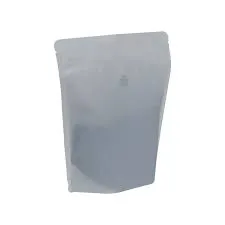- Afrikaans
- Albanian
- Amharic
- Arabic
- Armenian
- Azerbaijani
- Basque
- Belarusian
- Bengali
- Bosnian
- Bulgarian
- Catalan
- Cebuano
- chinese_simplified
- chinese_traditional
- Corsican
- Croatian
- Czech
- Danish
- Dutch
- English
- Esperanto
- Estonian
- Finnish
- French
- Frisian
- Galician
- Georgian
- German
- Greek
- Gujarati
- haitian_creole
- hausa
- hawaiian
- Hebrew
- Hindi
- Miao
- Hungarian
- Icelandic
- igbo
- Indonesian
- irish
- Italian
- Japanese
- Javanese
- Kannada
- kazakh
- Khmer
- Rwandese
- Korean
- Kurdish
- Kyrgyz
- Lao
- Latin
- Latvian
- Lithuanian
- Luxembourgish
- Macedonian
- Malgashi
- Malay
- Malayalam
- Maltese
- Maori
- Marathi
- Mongolian
- Myanmar
- Nepali
- Norwegian
- Norwegian
- Occitan
- Pashto
- Persian
- Polish
- Portuguese
- Punjabi
- Romanian
- Russian
- Samoan
- scottish-gaelic
- Serbian
- Sesotho
- Shona
- Sindhi
- Sinhala
- Slovak
- Slovenian
- Somali
- Spanish
- Sundanese
- Swahili
- Swedish
- Tagalog
- Tajik
- Tamil
- Tatar
- Telugu
- Thai
- Turkish
- Turkmen
- Ukrainian
- Urdu
- Uighur
- Uzbek
- Vietnamese
- Welsh
- Bantu
- Yiddish
- Yoruba
- Zulu
Exploring the Benefits and Uses of Sugar Cane Fiber in Sustainable Products
Sugar Cane Fiber A Sustainable Resource with Endless Potential
Sugar cane, predominantly known for its significant role in sugar production, possesses another remarkable asset that often goes unnoticed its fiber. Derived from the stems of the sugar cane plant, this fibrous material is increasingly appreciated for its sustainability and versatility in a wide range of applications. From textiles to construction materials, the potential of sugar cane fiber is vast and far-reaching.
Sugar cane fiber, specifically known as bagasse, is the dry fibrous residue left after the extraction of juice from sugar cane stalks during the sugar-making process. Traditionally, this byproduct was often discarded or utilized as low-value animal feed. However, with the growing focus on sustainability and waste reduction, innovative uses for sugar cane fiber have emerged, showcasing its ability to transform from a mere byproduct into a valuable resource.
Sugar Cane Fiber A Sustainable Resource with Endless Potential
Moreover, the utilization of sugar cane fiber extends far beyond textiles. In the realm of construction, sugar cane fiber can be processed into composites that serve as sustainable building materials. These bio-composites can be used for insulation, roofing, and even in the production of furniture. Such applications not only help reduce waste but also contribute to a circular economy, where byproducts are repurposed into valuable materials rather than being disposed of.
sugar cane fibre

The automotive industry is also tapping into the potential of sugar cane fiber. Given the push toward lightweight and sustainable materials, sugar cane fiber is being explored for use in interior components of vehicles. These biocomposites can help reduce the overall weight of vehicles, leading to decreased fuel consumption and lower emissions. As car manufacturers strive to meet increasingly stringent environmental regulations, incorporating sugar cane fiber into their designs could be a game-changer.
Another essential facet of sugar cane fiber is its potential in the paper industry. The production of paper traditionally relies on wood pulp, leading to deforestation and environmental degradation. However, by using sugar cane fiber as a raw material for paper production, manufacturers can reduce their reliance on timber resources. Sugar cane fiber paper is not only strong and durable but also offers a unique texture and appearance, appealing to environmentally conscious consumers.
Transitioning to sugar cane fiber can have significant economic implications, especially for countries that are major producers of sugar cane. By expanding the utilization of sugar cane byproducts, these nations can foster job creation, stimulate local economies, and provide farmers with additional revenue streams. Furthermore, the export of sugar cane fiber-based products can generate foreign exchange, contributing to overall economic growth.
In conclusion, sugar cane fiber represents a promising avenue for sustainability across various industries. Its versatility, combined with eco-friendly attributes, positions it as a formidable alternative to traditional materials. As the world increasingly recognizes the importance of sustainable practices, the adoption of sugar cane fiber in textiles, construction, automotive, and paper industries can drive innovative approaches while reducing environmental impact. By embracing this renewable resource, we can pave the way toward a greener future, transforming waste into value and promoting sustainability through resource-efficient solutions. The journey of sugar cane from a common agricultural crop to a sustainable powerhouse underscores the endless potential that lies within our natural resources.













